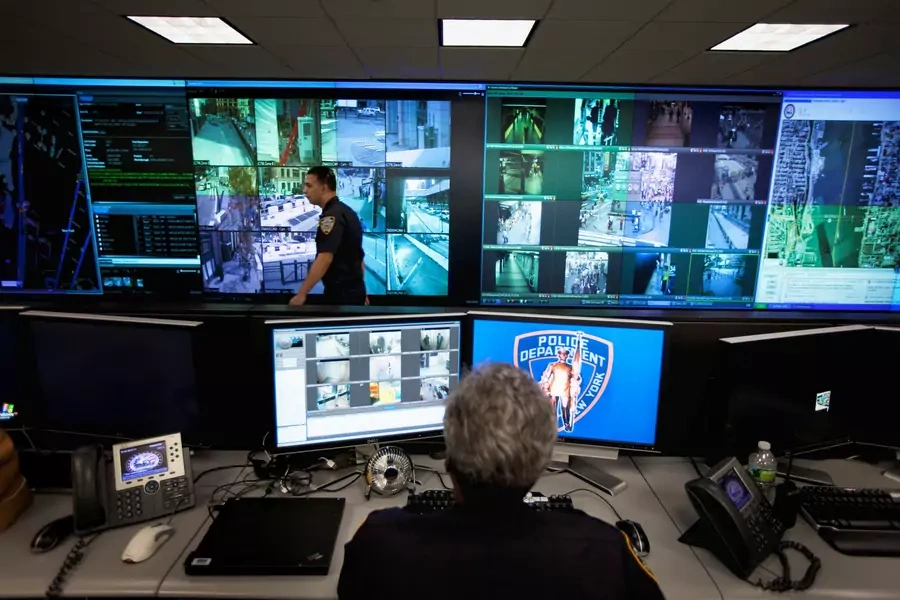The “Defund the Police” Movement and the Future of Digital Policing

The killing of George Floyd and the resulting nationwide protests have forced a reckoning with policing in the United States. These events have focused renewed attention on long-standing criticisms of law enforcement, including complaints about racism in police behavior, the militarization of police forces, and the lack of accountability for abuses of police power and authority. The anger unleashed by the protests sends the message that previous attempts to address these and other problems through police reform have failed. This perceived failure has energized interest in more radical approaches, symbolized by calls to “defund the police.”
What defunding the police means is subject of earnest policy debate and the source of intense political controversy. The idea’s essence is the proposition that policing in the United States needs radical transformation and cannot be fixed by conventional reform strategies. Such transformative change would affect every aspect of law enforcement, including so-called “digital policing.” In such policing, law enforcement agencies use digital technologies (e.g., camera-equipped smart devices), techniques (e.g., data mining and geospatial crime mapping), and services (e.g., cloud computing and social media) to prevent, investigate, and prosecute criminal activity. The advent of digital policing recognized the impact of the revolution in information technologies on society and seized on opportunities such technologies provided law enforcement to increase the effectiveness, efficiency, transparency, and fairness of the criminal justice system.
More on:
The demand for radical change in law enforcement puts digital policing under the microscope and raises questions about what a transformation of police authority, power, and accountability would mean for it. In response to Floyd’s death and the protests that followed, Amazon and Microsoft stopped making their respective facial-recognition technologies available to police forces. IBM announced that it was ending its work on facial recognition. All three companies identified the danger that facial-recognition technology poses for enabling racial profiling by the police. These actions brought alive long-expressed fears that police application of innovative digital technologies and techniques, such as artificial intelligence and social-media monitoring, is vulnerable to racial prejudice in individual officers and law enforcement agencies.
Policy reactions to previous incidents involving racial discrimination and police misconduct, such as the killing of Michael Brown in Ferguson, Missouri in 2014, included increased use of body and dashboard cameras by police in order to deter misconduct and make law enforcement activities more transparent. The ubiquity of smart phone cameras in society promised to supplement the deterrence and transparency that digital technologies could create for police action. However, the proliferation of video evidence of abusive police behavior toward Floyd and peaceful protesters weakens the case that saturating law enforcement contexts with digital cameras has produced transformative deterrence or transparency.
The responses of African American communities across the United States to Floyd’s death revealed the disconcerting extent of the entrenched problems between these communities and police forces. The depth of the mistrust expressed by African American leaders and citizens demonstrates that one promised benefit of digital policing—improved relations between the police and communities—has not materialized in neighborhoods and communities around the country despite increased police adoption of new technologies, techniques, and services.
Digital policing was never presented as a panacea for all the challenges that law enforcement faces in the United States. The timing, speed, and scale of technological adoption by law enforcement agencies has been so recent, swift, widespread, and diverse that measuring its impact on policing proves difficult. However, a report [PDF] funded by the Department of Justice observed that “technological improvements have increased police capabilities, but it is not certain that they have enabled law enforcement to do their jobs more effectively.” The report concluded that “technology has not had a game-changing impact on policing in terms of dramatically altering the philosophies and strategies used for preventing crime, responding to crime, or improving public safety.”
The demand for change in American policing seeks to transform those overarching philosophies and strategies rather than tinkering with how law enforcement uses digital technologies. Transformation could flow, some argue, by radically re-orienting policy, such as improving the social determinants of public safety by reallocating funds from law enforcement into social programs, mental health services, and economic development initiatives in local communities. As members of the House of Representatives proposed in the Justice in Policing Act of 2020, other reform ideas emphasize increased regulation to end racial profiling in law enforcement, increase accountability for police misconduct, and restrict the transfer of military-grade weaponry and equipment to police forces.
More on:
Looking ahead, what contribution digital policing makes to the transformation of policing in the United States will depend foremost on how communities and governments handle non-technological challenges, especially overcoming racism and resolving disagreements about balancing the authority of law enforcement agencies, the capabilities of police forces, and the accountability of all participants in the criminal justice system.
 Online Store
Online Store